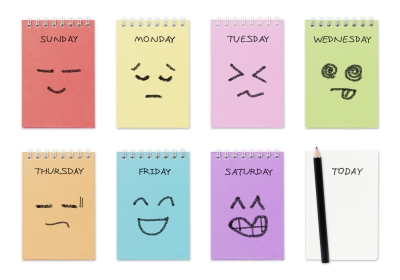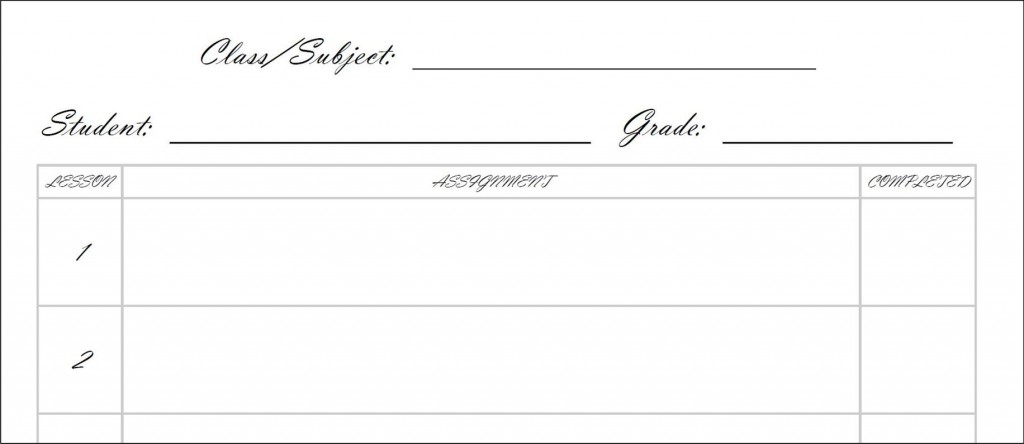Planning Homeschool Days
You have established your school year calendar, and you’ve set up a routine for your week based on your priorities. Now, it’s time to plan your days!

When I first started homeschooling, I would simply plan a few weeks in advance. Sometimes I could lay things out for 6 weeks at a time, but I always had to use pencil. Something would change. A new concept would take weeks instead of days to conquer. I had to figure out something better!
My planning skills did not really fully blossom until I started using an online planning system. I first used the free online system provided by Home School Inc., and the past few years I have used Homeschool Skedtrack.
What I have enjoyed the most about both of these online systems is the “move to the next day” feature. Instead of erasing and changing a written planner, I simply skip the lesson, and the system moves it to the next day’s schedule. This provided me with room to breathe.
So, here’s how I plan my homeschool days now:
Pull out curriculum for one subject.
That’s right, just one subject. The best way to eat an elephant? One bite at a time!
Note the number of lessons or the number of chapters.
Take your curriculum and see what the publisher has already broken down for you! Math and grammar will probably have about 120 lessons each year. History and science will probably feature chapters as well as lessons. Some curriculum is based on hours per day for a certain number of days. Don’t forget to count for tests and projects too!
Look at your school calendar and routine to decide how often you need to complete a lesson/chapter/activity.
For example, I have used Story of the World for history in elementary grades. I would see that the book had 42 chapters, but I only had 36 weeks. I decided that 2 chapters a week would be our average. Our routine had us focusing on history twice a week, so that meant one chapter would be our lesson for each history day. This gave me plenty of wiggle room when a chapter would bring more interest…or when a week went haywire.
Write out your lessons in order.
So simple! Just get a notebook or get on your computer and write the number of days that you anticipate for the school year in that subject. For math, I would number to 140 for a full school year. Because we only did history twice a week, I would number to 80. Number 1 would be Chapter 1. Number 2 would be Chapter 2. And so on, and so on…
For most curriculum, you could make a copy of the table of contents and put the numbers next to the lessons. I know Pinterest and everyone’s fancy blogs make us believe it HAS to be creative and beautiful…but it doesn’t. It first needs to be practical! If you have time to make it pretty, then go for it! I just never find that much time in my day….
AS YOU GO
As you write out the lessons, make special notes next to the lesson detail about things you need to have for the lesson. Keep it short and use lists for a quick overview. This will save you valuable time, especially on those mornings after a long, sleepless night…Hey! Isn’t that every morning?
Now, move on to the next subject, and the next subject….
Keep it up. Go through each subject you plan to teach for the school year. Put all the papers together in a folder or write them in a bound notebook or keep the forms in a folder together on your computer.
Start homeschooling.
Start the first day with the Number 1 lessons for the subjects to be taught on that day. You will probably finish them all, because the first day you will probably have the most determination!
The next day you may find yourself struggling to get one subject completed. No worries. It won’t throw off your schedule.
Check off lessons as they are completed.
As you finish a lesson or activity, mark it with a checkmark or with a completion date. You can even write notes about test grades or special accomplishments next to it or below it.
My older students (middle school/high school) are given their plans. They are quickly able to see what needs to be done that day or that week…if they want to get ahead. I simply go over the lessons once a week to make sure they are staying the course. Some subjects require daily oversight no matter what age, and you will know that or discover it within the first few weeks!
WHAT IF THEY GET STUCK?
Whenever you find yourself going over the same lesson several days in a row, don’t worry. Just keep working on it. When you feel comfortable enough, mark it off and go to the next lesson. As you get closer to the end of the school year, you will see if you need to double up on good days or if you can relax and enjoy the ride!
If you only get through half the lessons in a school year, you have probably found a tough subject for your child, and your lesson plans can help you discover the weaknesses. It will tell you what concept took several weeks to master. It will allow you to evaluate clearly. That’s a good thing!
Planning DOES take focused time, and you have to find the joy in developing your student’s study plan. Remember that this dedicated time will keep you moving forward. It will give you a path and a goal for each subject.
I had shared my planning process in a Facebook comment several months ago, and someone asked me to give them a copy of a form to use. I sort of laughed, because it really is as simple as a sheet of paper with numbers down the margin. But, here are printable forms for those of you who just need a place to start. I tried to make it pretty, but most of all I hope you will see the simplicity of the process.
So, breathe. Get your computer or notebook/pen and pull out the math curriculum. Just start.
Let’s Chat: How do you plan your homeschool days? Click here to share your thoughts.
Like this post? Please share with your friends using the buttons below, and click here to receive my blog updates via email. When you sign up for email updates, you get a free copy of my Know Your Why ebook!Disclosure: I have not received any compensation for writing this post. I have no material connection to the brands, products, or services mentioned. I am disclosing this in accordance with Federal Trade Commission’s 16 CFR, Part 255.

